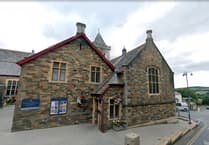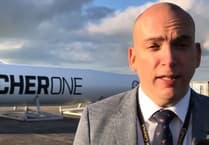THERE can be no finer or honourable shed than the shed at Davidstow Moor RAF Memorial Museum. It contains a story dedicated to the memory of the Jenkinson brothers.
Inside you cannot help but be caught up in a real life adventure that is not that dissimilar to another ‘Great Escape’.
Philip Jenkinson was born in Knightsbridge, London in 1923 but moved to St Breward at the age of two. In 1936 he and his family moved to Constantine near Falmouth.
He left school at 14 and found work on a poultry farm. With the outbreak of war in 1939 Mr Jenkinson joined the Local Defence Volunteers which later became the Home Guard. At the time he was too young to be issued with a rifle so was given a First World War bayonet and arm band.
Philip and two other farm workers went to Falmouth shortly after to ‘join up’. Philip was again too young but the other two joined the Navy and the Army.
Once he was 18 he enlisted in the RAF. The first posting was to Blackpool for training. Here he was selected for air crew and was posted to Bridlington, Initial Training Wing.
Philip went on to pass an exam to work overseas. Before he knew it he was on a train to Cardiff and then a ship called ‘Cavina’ and bound for Halifax, Nova Scotia.
Once in Canada he went to various bomb and gunner schools. He returned back on the RMS Queen Elizabeth, which was being used as a troopship at that time.
He flew training flights in Whitleys. On one occasion one of the smoke bombs that was due to be dropped over Lundy Island became stuck — this bomb can be seen in this very shed.
After training Philip was sent to 10 squadron where he went on active service flying in four-engined Halifaxs to Germany and Italy as a mid upper gunner, aged 19.
On his tenth trip he was hit and had to parachute out. He heard and spotted other parachutists around him. They too had been shot down near Munich. They carefully buried their parachutes and kept safe by hiding in woods. They moved in darkness and shadows. They became hungry as not everyone had their ration packs and emergency kits. Thirst was even more of a concern and they found themselves drinking out of puddles on the roads when the coast was clear.
They survived this way for nine days and were very close to the Swiss border when they were captured by German soldiers. Philip went to a prisoner of war camp, Stalagluft 6 Heydekrug. This was a camp especially for RAF non-commissioned aircrew. Here Philip stayed for the remainder of the war.
The story does not end there though. Little did Philip know that his brother Peter, who had been poorly with pleurisy, joined the RAF through sheer grit and determination as a Flight Sergeant. He was sadly killed in 1945.
In the 1950s Philip decided to pay his respects at the grave of the Halifax pilot and rear gunner. By coincidence he looked to see his brother’s grave behind those of his old air crew mates.
At the time Mr Jenkinson said: “There are more than 3,000 RAF crew buried in that cemetery and its incredible that the two members of my crew and my brother who died 300 miles away and 18 months apart should be buried so close to each other.”
Philip Jenkinson died in 2011 but kept all his artefacts from this time in his life. He passed it on to Graham Lewis who was his friend and a plane crash site archaeologist.
Mr Lewis said: “I was privileged to look after the collection and it is an honour to have it all on display now. It had been under the stairs of Philip’s home for years, in fact, since he came back from the war.”
This shed is well worth a visit and free. It may be small but it is bursting at the seams with a wealth of Second World War history and artefacts from two extraordinary brothers.
It is only because of museums like this that we are privileged to read a real adventure story. A true story of this nature might have been lost otherwise along with all the artefacts such as Mr Jenkinson’s flying jacket. He kept this on even whilst in captivity. One may go away thinking if only that jacket could talk with its worn leather and perished zips.
Then you look around, take a moment and realise for yourself what a real hero is.




